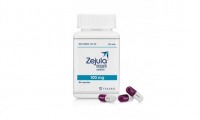-
Gracell Biotechnologies Announces China NMPA Clearance for IND Application for Phase 1/2 Clinical Trial of FasTCAR-T GC012F
- Source: drugdu
- 82
- December 25, 2023
-
“National Key Laboratory for R&D of New Vaccines for Emerging Infectious Diseases” was launched!
- Source: drugdu
- 83
- December 25, 2023
-
FDA Grants Priority Review to Genentech’s sBLA for Xolair to Treat Food Allergies
- Source: drugdu
- 101
- December 22, 2023
-
【EXPERT Q&A】What documents are needed and what is the specific process for exporting medical equipment?
- Source: drugdu
- 170
- December 22, 2023
-
Amid BioNTech legal fight, CureVac takes a loss as German court invalidates patent
- Source: drugdu
- 92
- December 21, 2023
-
Smartwatches prove effective in detecting heart arrhythmias in children
- Source: drugdu
- 107
- December 20, 2023
-
Fluorescence Microscopy Combined with AI Enables Detection of Tumors at Early Stage
- Source: drugdu
- 110
- December 20, 2023
-
GSK tees up AstraZeneca rivalry with positive Jemperli-Zejula readout in endometrial cancer
- Source: drugdu
- 197
- December 20, 2023
-
Self-Heating Microfluidic Devices Can Detect Diseases in Tiny Blood or Fluid Samples
- Source: drugdu
- 84
- December 19, 2023
your submission has already been received.
OK
Subscribe
Please enter a valid Email address!
Submit
The most relevant industry news & insight will be sent to you every two weeks.













